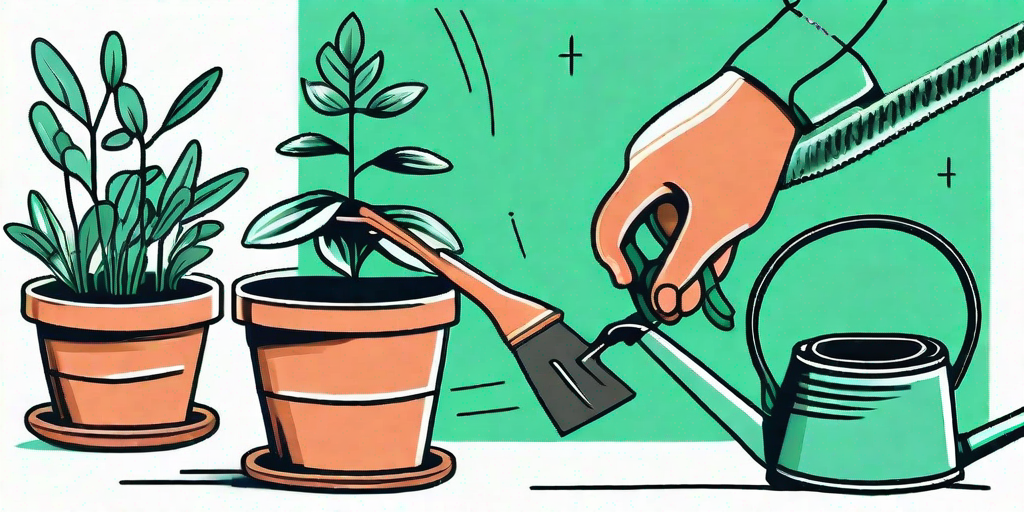
Ah, honeysuckle. The sweet scent, the vibrant colors, the bees buzzing around in a frenzy of nectar-filled joy. If your garden is feeling a bit drab, a bit lifeless, or just a bit 'meh', then transplanting honeysuckle could be just the ticket to transform it into a paradise of floral delight. But how, you ask? Fear not, dear reader, for we have the answers you seek.
Understanding Honeysuckle
Before we dive into the nitty-gritty of transplanting, it's important to understand what makes honeysuckle tick. This plant is a bit of a diva, you see. It likes its soil just so, its sunlight just right, and its water levels Goldilocks perfect. Not too much, not too little, but just right.
There are over 180 species of honeysuckle, with some being deciduous (losing their leaves in winter) and others evergreen. They can be found all over the world, from the chilly climes of Siberia to the sunny shores of California. So, no matter where you live, there's likely a honeysuckle that will feel right at home in your garden.
Choosing the Right Honeysuckle
With so many species to choose from, picking the right honeysuckle can feel a bit like being a kid in a candy store. Do you go for the classic Lonicera japonica with its intoxicating scent and creamy white flowers? Or perhaps the Lonicera periclymenum, with its vibrant pink and yellow blooms?
Ultimately, the best honeysuckle for you will depend on your climate, soil type, and personal preference. But don't worry, we'll guide you through the process of choosing the perfect plant later on.
Transplanting Honeysuckle: A Step-by-Step Guide
Now, let's get to the good stuff. The reason you're here. The pièce de résistance. The step-by-step guide to transplanting honeysuckle. Grab your gardening gloves, your trusty trowel, and let's get to work.
Transplanting honeysuckle isn't as daunting as it might seem. In fact, with a bit of preparation and a dash of patience, it can be quite a fun and rewarding process. And the best part? You'll be rewarded with a garden that's bursting with color and fragrance.
Step 1: Choose the Perfect Spot
Remember when we said honeysuckle was a bit of a diva? Well, this is where that comes into play. Honeysuckle needs a spot in your garden that gets plenty of sunlight, but also has some shade during the hottest part of the day. It also likes well-drained soil, so avoid areas that tend to get waterlogged.
Once you've found the perfect spot, it's time to prepare the soil. This involves removing any weeds or grass, and adding some compost or well-rotted manure to give your honeysuckle a nutrient boost. If your soil is heavy clay, you might also want to add some grit to improve drainage.
Step 2: Dig the Hole
Now that your spot is prepared, it's time to dig the hole. This should be twice as wide and just as deep as the root ball of your honeysuckle. This gives the roots plenty of room to spread out and get established.
Once your hole is dug, place your honeysuckle in the hole and backfill with soil, firming it gently around the base of the plant. Make sure the top of the root ball is level with the soil surface.
Step 3: Water and Mulch
After transplanting, give your honeysuckle a good drink of water. This helps to settle the soil and ensures the roots are in contact with the soil. Then, apply a layer of mulch around the base of the plant. This helps to retain moisture and suppress weeds.
And voila! You've successfully transplanted honeysuckle. Now all that's left to do is sit back, relax, and wait for your garden to transform into a honeysuckle haven.
FAQs
Got questions? We've got answers. Here are some of the most common queries we get about transplanting honeysuckle.
When is the best time to transplant honeysuckle?
The best time to transplant honeysuckle is in the early spring or late fall, when the plant is dormant. This reduces stress on the plant and gives it the best chance of survival.
How often should I water my transplanted honeysuckle?
For the first few weeks after transplanting, you should water your honeysuckle every couple of days. After that, you can reduce watering to once a week, or whenever the soil feels dry to the touch.
Can I transplant honeysuckle in the summer?
While it's possible to transplant honeysuckle in the summer, it's not recommended. The heat and dry conditions can stress the plant and reduce its chances of survival.
Conclusion
Transplanting honeysuckle is a fantastic way to add color, fragrance, and life to your garden. With a bit of preparation and care, you can transform your outdoor space into a honeysuckle haven. So why wait? Grab your gardening gloves and get started today!















